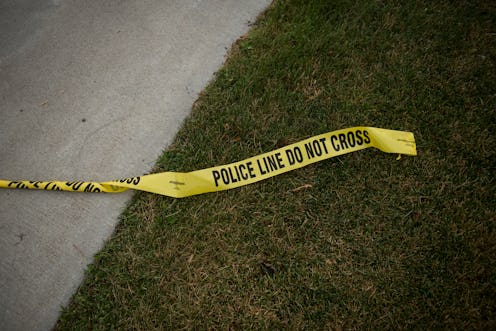News
Here's What Happened To Alfred Olango
Tuesday in El Cajon, California, a suburb near San Diego, protesters gathered after yet another black man was shot by police. The San Diego Union Tribune reported that as many as 200 gathered by evening, including a number of community leaders. But that raises the question: What happened to Alfred Olango?
Police Chief Jeff Davis told The Union Tribune that police received a call reporting that a man — they have yet to confirm his identity officially — was "not acting like himself," and was walking in the street, endangering himself and motorists. Two officers responded to the scene and found him behind a restaurant with his hands in his pockets. Chief Davis said one officer gave him verbal commands, which he claimed Olango continued to ignore. The officer took out a firearm and continued, but to no avail. Then a second officer took out a stun gun.
In the following moments, Olango "drew an object from his front pants pockets, placed both hands together on it and extended toward the officers," Davis said, according to The LA Times. At this point one officer fired the stun gun, and the other his firearm, discharging the gun several times. No weapon was found at the scene, and Olango was transported to a local hospital, where he later died from his wounds, according to a police statement. No further details have been released at this time.
Chief Davis said the 911 call may have been from the victim's sister. A woman had called, claiming he was mentally ill. Police have not confirmed their relationship or her claim. But a woman at the scene of the shooting, Rumbie Mubaiwa, started filming on Facebook Live, saying she called 911 and screaming, "They killed my brother!"
There were no body cameras on the officers. The Los Angeles Times reported that the El Cajon police force has participated in a trial program and ordered cameras, but they still haven't arrived. There is video of the shooting, though, taken on a witness's cellphone, and the police have released a still from it.
The police collected that phone, and those from other witnesses, according to local news reports, The New York Times reported. The police say just the video was collected. In either case, for now, the police department is refraining from releasing the video until the District Attorney’s Office investigates the shooting, as per county protocol. Lt. Rob Ransweiler, a spokesman for the police department, told The Times, "I’m sure at some point in time that video will become public."
Sooner may be better than later. If the Charlotte protests are indicative, the video could become a rallying cry for protesters.
